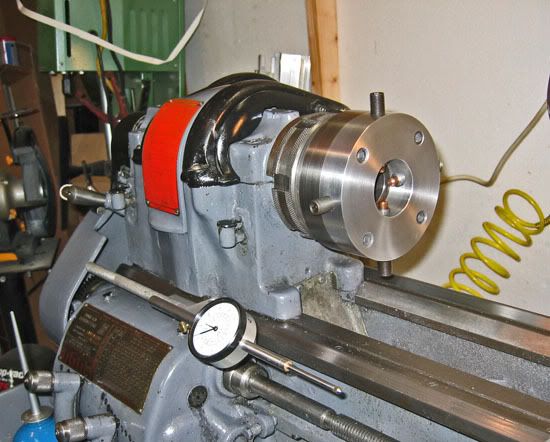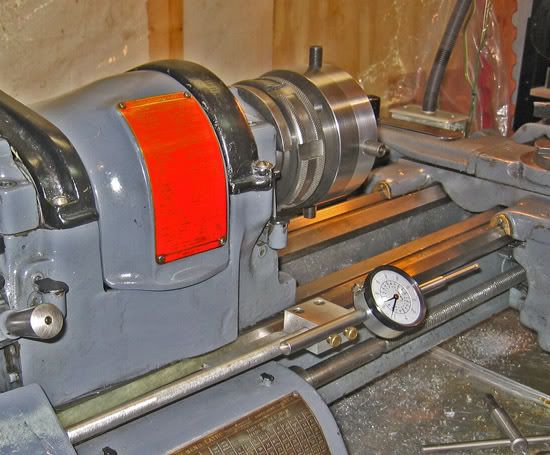Thanks, I think I can see the rod camouflaged behind the indicator. Excellent idea. Will try that myself. I currently have a used Taiwan 12 X 36 that's OK but have been pondering the SB HVY 10 that keeps popping up on CL. Course if it hasn't sold there may be a reason for that. It'd be a 3 hr drive to go check it out. Keep hearing that the SB HVY 10 is the ideal gunsmith lathe. You concur?
Jerry,
Here is a better photo of the indicator setup. The two thumb screws hold the rod in position. Works well.
As for the Heavy10 being the ideal gunsmith lathe, I am not really qualified to say whether it is THE ideal, but it does have some great features that are applicable to gunsmithing. The biggest caution that I will suggest is that it needs to be in excellent condition when you buy it, unless you are looking to rebuild it. If it has seen much use, you can expect at the least some wear in the cross slide and compound screws, with the accompanying backlash in the dials. Next is wear in the ways, which is not a simple or cheap fix. Then the lead screw might also show a good bit of wear. Throw in wear of the gears in the apron, or the head stock, and your new purchase may be a better candidate for "parting out"

. If you are fortunate enough to find a "home shop queen" that has not had a lot of use, and was well cared for, GRAB IT. If not, become a frequent visitor to Practical Machinist, Ebay, and the many businesses and web sites that specialize in South Bend lathe parts. Some new parts are still available from LeBlond, but expect to pay nearly as much as a new low end import lathe for a few major parts.
It has been said that you can do good work with a "worn out" lathe, but it requires more expertise and time than a lathe in good condition. There are some nice South Bends out there, but there are some worn out hulks as well. I was pretty lucky with my lathe, but it still required a bit of "tweaking" to get it working in good order. I learned much more about how a Heavy10 works, plus disassembly and reassembly, than I ever expected to know

. Now, I can see why nice ones are highly regarded.
Would I buy a South Bend again? You bet. Is it better than new lathes? Not if we are talking about new top of the line tool room lathes, but it's not in the same price range either, and it is capable of EXCELLENT work if the operator does his part.
Jim



